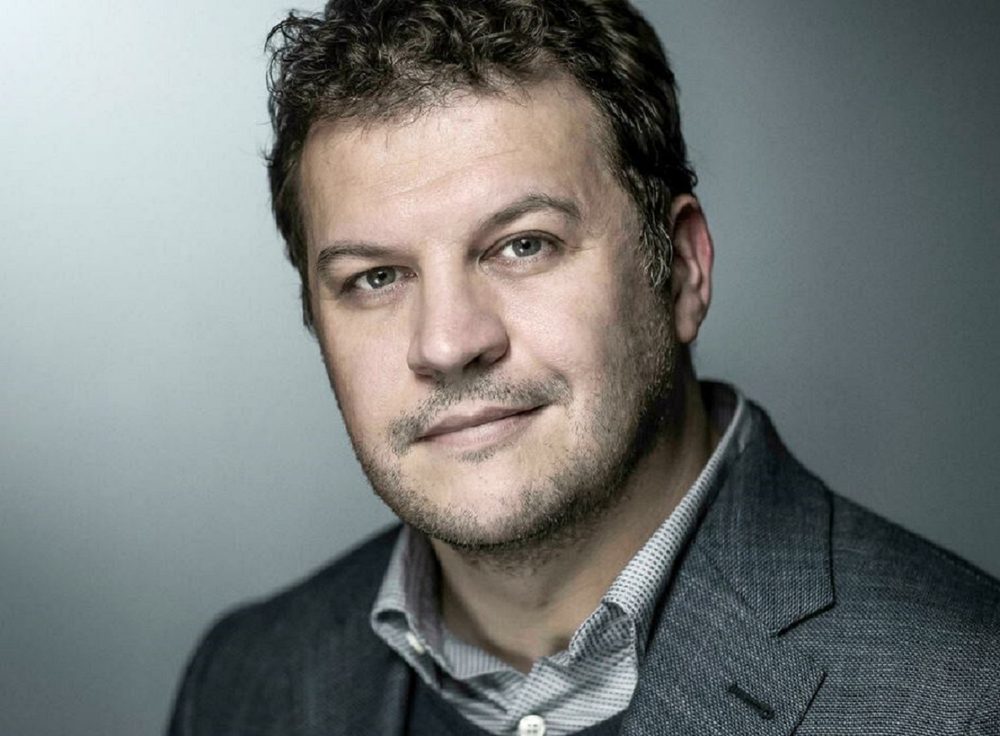Тревога на поводке. Эффективная техника снижения стресса - Ева Ассельманн
Книгу Тревога на поводке. Эффективная техника снижения стресса - Ева Ассельманн читаем онлайн бесплатно полную версию! Чтобы начать читать не надо регистрации. Напомним, что читать онлайн вы можете не только на компьютере, но и на андроид (Android), iPhone и iPad. Приятного чтения!
Шрифт:
Интервал:
Закладка:
18. Öst, L.-G., Jerremalm, A. & Jansson, L. Individual response patterns and the effects of different behavioral methods in the treatment of agoraphobia. Behaviour Research and Therapy 22, 697–707 (1984).
19. Osberg, J. W. The effectiveness of applied relaxation in the treatment of speech anxiety. Behavior Therapy 12, 723–729 (1981).
20. Clark, L. A. & Watson, D. Distress and fear disorders: an alternative empirically based taxonomy of the 'mood' and 'anxiety' disorders. British Journal of Psychiatry 189, 481–483 (2006).
21. Öst, L., Jerremalm, A. & Johansson, J. Individual response patterns and the effects of different behavioral methods in the treatment of social phobia. Behaviour Research and Therapy 19, 1–16 (1980).
22. Öst, L.-G., Sterner, U. & Fellenius, J. Applied tension, applied relaxation, and the combination in the treatment of blood phobia. Behaviour Research and Therapy 27, 109–121 (1989).
23. Chang-Liang, R. & Denney, D. R. Applied relaxation as training in self-control. Journal of Counseling Psychology 23, 183–189 (1976).
24. Beukes, E. W., Andersson, G., Fagelson, M. A. & Manchaiah, V. Dismantling internet-based cognitive behavioral therapy for tinnitus. The contribution of applied relaxation: A randomized controlled trial. Internet Interventions 25, 100402 (2021).
25. Arif, M., Sadlier, M., Rajenderkumar, D., James, J. & Tahir, T. A randomized controlled study of mindfulness meditation versus relaxation therapy in the management of tinnitus. The Journal of Laryngology & Otology 131, 501–507 (2017).
26. Andersson, G., Lundström, P. & Ström, L. Internet-Based Treatment of Headache: Does Telephone Contact Add Anything? Headache: The Journal of Head and Face Pain 43, 353–361 (2003).
27. Ström, L., Pettersson, R. & Andersson, G. A controlled trial of self-help treatment of recurrent headache conducted via the Internet. Journal of Consulting and Clinical Psychology 68, 722–727 (2000).
28. Trautmann, E. & Kröner-Herwig, B. A randomized controlled trial of Internet-based self-help training for recurrent headache in childhood and adolescence. Behaviour Research and Therapy 48, 28–37 (2010).
29. Lisspers, J. & Öst, L.-G. Long-term follow-up of migraine treatment: Do the effects remain up to six years? Behaviour Research and Therapy 28, 313–322 (1990).
30. Mitchell, K. A psychological approach to the treatment of migraine. British Journal of Psychiatry 119, 533–534 (1971).
31. Andersson, G., Johansson, C., Nordlander, A. & Asmundson, G. J. Chronic pain in older adults: a controlled pilot trial of a brief cognitive-behavioural group treatment. Behavioural and Cognitive Psychotherapy 40, 239–244 (2012).
32. Gustavsson, C. & von Koch, L. Applied relaxation in the treatment of long-lasting neck pain: a randomized controlled pilot study. Journal of Rehabilitation Medicine 38, 100–107 (2006).
33. Linton, S. J. & Götestam, K. G. A controlled study of the effects of applied relaxation and applied relaxation plus operant procedures in the regulation of chronic pain. British Journal of Clinical Psychology 23, 291–299 (1984).
34. Spence, S. H., Sharpe, L., Newton-John, T. & Champion, D. Effect of EMG biofeedback compared to applied relaxation training with chronic, upper extremity cumulative trauma disorders. Pain 63, 199–206 (1995).
35. Strong, J., Cramond, T. & Maas, F. The effectiveness of relaxation techniques with patients who have chronic low back pain. OTJR: Occupation, Participation and Health 9, 184–192 (1989).
36. Kemani, M. K. et al. Efficacy and cost-effectiveness of acceptance and commitment therapy and applied relaxation for longstanding pain. The Clinical Journal of Pain 31, 1004–1016 (2015).
37. Bastani, F., Hidarnia, A., Kazemnejad, A., Vafaei, M. & Kashanian, M. A randomized controlled trial of the effects of applied relaxation training on reducing anxiety and perceived stress in pregnant women. Journal of Midwifery & Women's Health 50, e36-e40 (2005).
38. Carlbring, P., Björnstjerna, E., Bergström, A. F., Waara, J. & Andersson, G. Applied relaxation: an experimental analogue study of therapist vs. computer administration. Computers in Human Behavior 23, 2–10 (2007).
39. Hutchings, D. F., Denney, D. R., Basgall, J. & Houston, B. K. Anxiety management and applied relaxation in reducing general anxiety. Behaviour Research and Therapy 18, 181–190 (1980).
40. Huhtela, O. S., Koivisto, N., Hägg, V. & Sipilä, K. Effectiveness of applied relaxation method vs splint in treatment of temporomandibular disorders in Finnish students. Journal of Oral Rehabilitation 47, 123–131 (2020).
41. Maynard, I. W., Hemmings, B., Greenlees, I. A., Warwick-Evans, L. & Stanton, N. Stress management in sport: A comparison of unimodal and multimodal interventions. Anxiety, Stress and Coping 11, 225–246 (1998).
42. Kische, H., Zenker, M., Pieper, L., Beesdo-Baum, K. & Asselmann, E. Applied relaxation and cortisol secretion: findings from a randomized controlled indicated prevention trial in adults with stress, anxiety, or depressive symptoms. Stress 25, 122–133 (2022).
43. Beesdo-Baum, K., Kische, H., Zenker, M. & Asselmann, E. Ecological momentary assessment and Applied Relaxation: results of a randomized indicated preventive trial in individuals at increased risk for mental disorders. Talk at the 52nd Congress of the German Psychological Society in Hildesheim, Germany (2022).
44. Beesdo-Baum, K. et al. Efficacy of Applied Relaxation as Indicated Preventive Intervention in Individuals at Increased Risk for Mental Disorders: A Randomized Controlled Trial. Behaviour Research and Therapy 157, 104162 (2022).
45. Kim, S., Park, Y. & Headrick, L. Daily micro-breaks and job performance: General work engagement as a cross-level moderator. Journal of Applied Psychology 103, 772–786 (2018).
46. Bosch, C. & Sonnentag, S. Should I take a break? A daily reconstruction study on predicting micro-breaks at work. International Journal of Stress Management 26, 378–388 (2019).
47. Liu, T.-Z. et al. Sleep duration and risk of all-cause mortality: a flexible, non-linear, meta-regression of 40 prospective cohort studies. Sleep Medicine Reviews 32, 28–36 (2017).
48. Hayes, S. C., Strosahl, K. D. & Wilson, K. G. Acceptance and commitment therapy: An experiential approach to behavior change. Guilford Press (1999).
49. Soroka, S., Fournier, P. & Nir, L. Cross-national evidence of a negativity bias in psychophysiological reactions to news. Proceedings of the National Academy of Sciences 116, 18888–18892 (2019).
50. Asselmann, E., Wittchen, H.-U., Lieb, R., Höfler, M. & Beesdo-Baum, K. Does low coping efficacy mediate the association between negative life events and incident psychopathology? A prospective-longitudinal community study among adolescents and young adults. Epidemiology and Psychiatric Sciences 25, 171–180 (2016).
51. Bandura, A. Self-efficacy: toward a unifying theory of behavioral change. Psychological Review 84, 191–215 (1977).
52. Bravata, D. M. et al. Prevalence, predictors, and treatment of impostor syndrome:
Прочитали книгу? Предлагаем вам поделится своим отзывом от прочитанного(прослушанного)! Ваш отзыв будет полезен читателям, которые еще только собираются познакомиться с произведением.
Уважаемые читатели, слушатели и просто посетители нашей библиотеки! Просим Вас придерживаться определенных правил при комментировании литературных произведений.
- 1. Просьба отказаться от дискриминационных высказываний. Мы защищаем право наших читателей свободно выражать свою точку зрения. Вместе с тем мы не терпим агрессии. На сайте запрещено оставлять комментарий, который содержит унизительные высказывания или призывы к насилию по отношению к отдельным лицам или группам людей на основании их расы, этнического происхождения, вероисповедания, недееспособности, пола, возраста, статуса ветерана, касты или сексуальной ориентации.
- 2. Просьба отказаться от оскорблений, угроз и запугиваний.
- 3. Просьба отказаться от нецензурной лексики.
- 4. Просьба вести себя максимально корректно как по отношению к авторам, так и по отношению к другим читателям и их комментариям.
Надеемся на Ваше понимание и благоразумие. С уважением, администратор knigkindom.ru.
Оставить комментарий
-
 Гость Елена24 июль 18:56
Вся серия очень понравилась. Читается очень легко, захватывает полностью . Рекомендую для чтения, есть о чем задуматься. Успеха...
Трактирщица 3. Паутина для Бизнес Леди - Дэлия Мор
Гость Елена24 июль 18:56
Вся серия очень понравилась. Читается очень легко, захватывает полностью . Рекомендую для чтения, есть о чем задуматься. Успеха...
Трактирщица 3. Паутина для Бизнес Леди - Дэлия Мор
-
 TatSvel219 июль 19:25
Незабываемая Феломена, очень интересный персонаж, прочитала с удовольствием! Автор-молодец!!!...
Пограничье - Надежда Храмушина
TatSvel219 июль 19:25
Незабываемая Феломена, очень интересный персонаж, прочитала с удовольствием! Автор-молодец!!!...
Пограничье - Надежда Храмушина
-
 Гость Наталья17 июль 12:42
Сюжет увлекательный и затейный,читается легко,но кто убийца,сразу было понятно....
Дорога к Тайнику. Часть 1 - Мария Владимировна Карташева
Гость Наталья17 июль 12:42
Сюжет увлекательный и затейный,читается легко,но кто убийца,сразу было понятно....
Дорога к Тайнику. Часть 1 - Мария Владимировна Карташева










